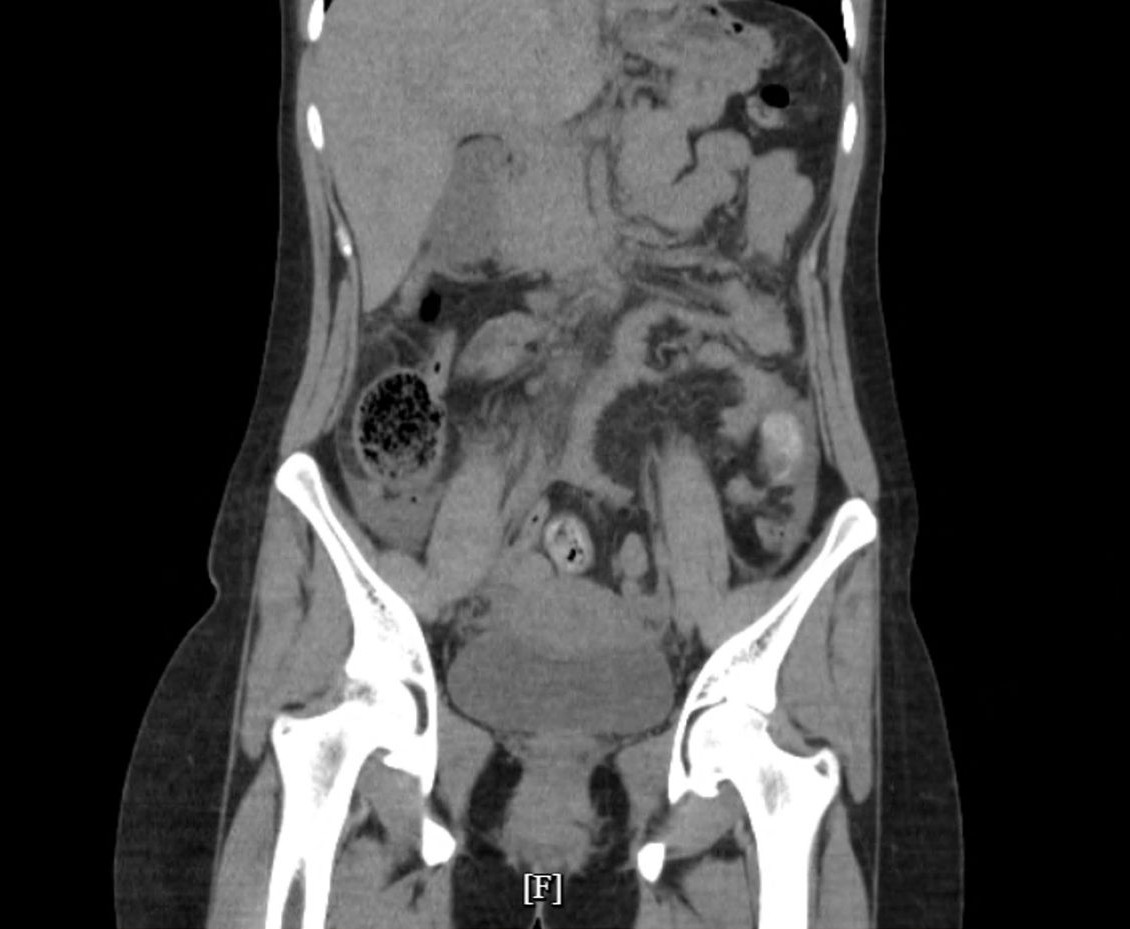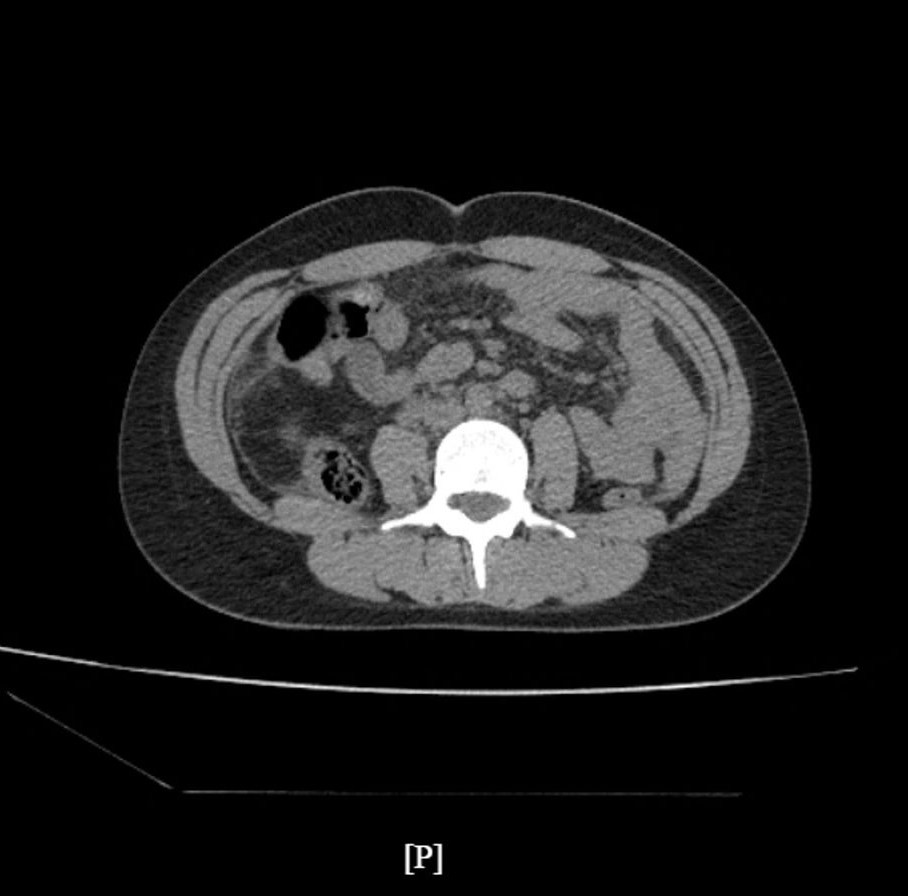Tuesday Poster Session
Category: IBD
P5548 - Appendiceal Crohn’s Disease Mimicking Acute Appendicitis in a Patient on Infliximab: A Diagnostic and Surgical Challenge
Tuesday, October 28, 2025
10:30 AM - 4:00 PM PDT
Location: Exhibit Hall
- KA
Kamal Akbar, MD
Larkin Community Hospital
South Miami, FL
Presenting Author(s)
Kamal Akbar, MD1, Martha Arevalo-Mora, MD1, Joseph Aguilar, MD2, Amit Sah, MD3, Juan Sarol, MD3, Luis Nassif, MD3
1Larkin Community Hospital, South Miami, FL; 2Universidad San Martin de Porres, Lima, San Martin, Peru; 3Larkin Community Hospital, Hialeah, FL
Introduction: Acute appendicitis is the most common abdominal surgical emergency, typically resulting from luminal obstruction by fecaliths, lymphoid hyperplasia, or neoplasia. Although rare, Crohn’s disease can manifest in the appendix, mimicking or precipitating appendicitis. Appendiceal Crohn’s disease (ACD), with a reported incidence of 0.2% to 0.55%, often necessitates surgical management, especially when ileocecal involvement is present. Infliximab, a TNF-α inhibitor commonly used to manage Crohn’s disease, carries a known risk of serious infections, including gastrointestinal perforation and potentially appendicitis, although a direct causal link remains unconfirmed.
Case Description/
Methods: We present the case of a 28-year-old woman with fistulizing Crohn’s disease, recently initiated on infliximab, who was admitted with signs of sepsis and acute abdominal pain. CT revealed a fecalith within the appendix, peri-appendiceal inflammation, and extraluminal gas. Same-day exploratory laparotomy uncovered distal ileal perforation, thickened bowel segments, and feculent peritonitis. A right hemicolectomy was performed. Histology of the appendix confirmed acute serositis with transmural inflammation and ulceration, consistent with Crohn’s pathology. Postoperatively, the patient developed intra-abdominal abscesses requiring percutaneous drainage and experienced a duodenal ulcer bleed. She was managed with antibiotics and supportive therapy and discharged in stable condition.
Discussion: This case underscores the diagnostic difficulty in distinguishing ACD from acute appendicitis, especially in patients on immunosuppressive therapy. It also highlights the importance of considering broader surgical intervention when ileocecal Crohn’s disease is suspected, as appendectomy alone may be insufficient. Further studies are warranted to elucidate the relationship between infliximab therapy and the risk of appendiceal complications.

Figure: Figure 1. Axial CT abdomen and pelvis without contrast demonstrating marked periappendiceal fat stranding and a focal intraluminal hyperdensity consistent with a fecalith. Pneumoperitoneum is visualized adjacent to the cecum, highly suggestive of acute appendiceal rupture.

Figure: Figure 2. Coronal CT showing inflammatory thickening of the terminal ileum and cecum, with surrounding fat stranding and extraluminal gas. Findings are consistent with Crohn’s disease involving the ileocecal region and perforated appendicitis.
Disclosures:
Kamal Akbar indicated no relevant financial relationships.
Martha Arevalo-Mora indicated no relevant financial relationships.
Joseph Aguilar indicated no relevant financial relationships.
Amit Sah indicated no relevant financial relationships.
Juan Sarol indicated no relevant financial relationships.
Luis Nassif indicated no relevant financial relationships.
Kamal Akbar, MD1, Martha Arevalo-Mora, MD1, Joseph Aguilar, MD2, Amit Sah, MD3, Juan Sarol, MD3, Luis Nassif, MD3. P5548 - Appendiceal Crohn’s Disease Mimicking Acute Appendicitis in a Patient on Infliximab: A Diagnostic and Surgical Challenge, ACG 2025 Annual Scientific Meeting Abstracts. Phoenix, AZ: American College of Gastroenterology.
1Larkin Community Hospital, South Miami, FL; 2Universidad San Martin de Porres, Lima, San Martin, Peru; 3Larkin Community Hospital, Hialeah, FL
Introduction: Acute appendicitis is the most common abdominal surgical emergency, typically resulting from luminal obstruction by fecaliths, lymphoid hyperplasia, or neoplasia. Although rare, Crohn’s disease can manifest in the appendix, mimicking or precipitating appendicitis. Appendiceal Crohn’s disease (ACD), with a reported incidence of 0.2% to 0.55%, often necessitates surgical management, especially when ileocecal involvement is present. Infliximab, a TNF-α inhibitor commonly used to manage Crohn’s disease, carries a known risk of serious infections, including gastrointestinal perforation and potentially appendicitis, although a direct causal link remains unconfirmed.
Case Description/
Methods: We present the case of a 28-year-old woman with fistulizing Crohn’s disease, recently initiated on infliximab, who was admitted with signs of sepsis and acute abdominal pain. CT revealed a fecalith within the appendix, peri-appendiceal inflammation, and extraluminal gas. Same-day exploratory laparotomy uncovered distal ileal perforation, thickened bowel segments, and feculent peritonitis. A right hemicolectomy was performed. Histology of the appendix confirmed acute serositis with transmural inflammation and ulceration, consistent with Crohn’s pathology. Postoperatively, the patient developed intra-abdominal abscesses requiring percutaneous drainage and experienced a duodenal ulcer bleed. She was managed with antibiotics and supportive therapy and discharged in stable condition.
Discussion: This case underscores the diagnostic difficulty in distinguishing ACD from acute appendicitis, especially in patients on immunosuppressive therapy. It also highlights the importance of considering broader surgical intervention when ileocecal Crohn’s disease is suspected, as appendectomy alone may be insufficient. Further studies are warranted to elucidate the relationship between infliximab therapy and the risk of appendiceal complications.

Figure: Figure 1. Axial CT abdomen and pelvis without contrast demonstrating marked periappendiceal fat stranding and a focal intraluminal hyperdensity consistent with a fecalith. Pneumoperitoneum is visualized adjacent to the cecum, highly suggestive of acute appendiceal rupture.

Figure: Figure 2. Coronal CT showing inflammatory thickening of the terminal ileum and cecum, with surrounding fat stranding and extraluminal gas. Findings are consistent with Crohn’s disease involving the ileocecal region and perforated appendicitis.
Disclosures:
Kamal Akbar indicated no relevant financial relationships.
Martha Arevalo-Mora indicated no relevant financial relationships.
Joseph Aguilar indicated no relevant financial relationships.
Amit Sah indicated no relevant financial relationships.
Juan Sarol indicated no relevant financial relationships.
Luis Nassif indicated no relevant financial relationships.
Kamal Akbar, MD1, Martha Arevalo-Mora, MD1, Joseph Aguilar, MD2, Amit Sah, MD3, Juan Sarol, MD3, Luis Nassif, MD3. P5548 - Appendiceal Crohn’s Disease Mimicking Acute Appendicitis in a Patient on Infliximab: A Diagnostic and Surgical Challenge, ACG 2025 Annual Scientific Meeting Abstracts. Phoenix, AZ: American College of Gastroenterology.
